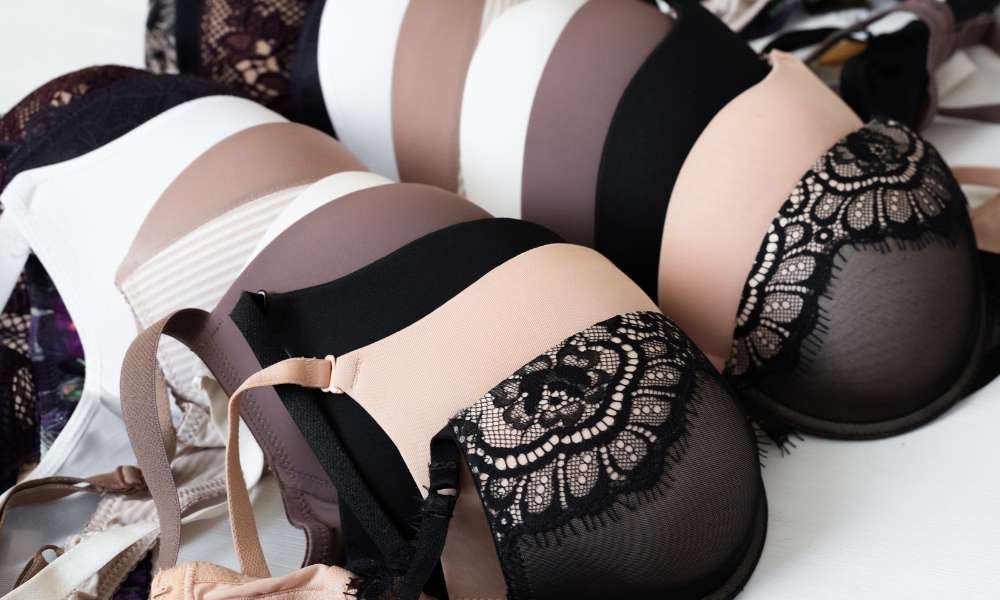Guide to Ladies' See-Through Underwear: Materials, Fit, Care and Styling
See-through underwear offers a delicate balance between elegance and functionality, requiring careful consideration of materials, fit, and styling choices. Understanding the various levels of transparency in different fabrics helps create confident outfit combinations while maintaining comfort and personal preferences. This comprehensive guide explores the essential aspects of selecting, wearing, and maintaining sheer undergarments for modern wardrobes.

Choosing the right see-through underwear involves understanding multiple factors that affect both comfort and appearance. From fabric selection to proper care techniques, each element plays a crucial role in creating a satisfying wardrobe experience. Modern manufacturing has expanded options significantly, offering various transparency levels and innovative materials that cater to different needs and preferences.
Fabrics and Transparency: Common Sheer Materials and What Their Levels of See-Through Mean
Different materials offer varying degrees of transparency, each serving specific purposes and aesthetic goals. Mesh fabrics typically provide the highest level of transparency, often used for decorative panels or full coverage pieces where maximum sheerness is desired. Lace materials range from semi-sheer to completely transparent depending on the pattern density and thread thickness.
Tulle and chiffon create moderate transparency levels, offering subtle coverage while maintaining an ethereal appearance. These materials work well for layering and provide gentle concealment without complete opacity. Modal and bamboo blends with open weaves deliver controlled transparency, balancing breathability with modest coverage.
Synthetic materials like polyester and nylon can be engineered to specific transparency levels through weave patterns and fiber thickness. Natural fibers such as silk and cotton achieve sheerness through ultra-fine threads and loose weaves, creating luxurious textures with varying opacity levels.
Fit and Sizing: Choosing Comfortable Cuts and Appropriate Coverage
Proper sizing becomes even more critical with see-through garments, as poor fit can create unflattering effects and discomfort. Band measurements should allow for natural movement without creating bulges or gaps that become more noticeable through sheer materials. Cup sizing requires particular attention, as transparent fabrics may not provide the same support structure as opaque alternatives.
Seam placement affects both comfort and appearance in sheer garments. Flat seams reduce visible lines and prevent chafing against sensitive skin. Consider cuts that complement your body shape while providing adequate coverage for your comfort level and intended use.
Adjustable elements like straps and hooks offer flexibility for achieving optimal fit across different outfit requirements. Some designs incorporate strategic opacity variations, combining sheer panels with more substantial coverage areas for balanced aesthetics and function.
Styling and Layering: Practical Ways to Wear Sheer Underwear with Outfits
Layering techniques allow versatile styling options with see-through undergarments. Wearing sheer pieces under fitted clothing creates subtle texture and visual interest without revealing too much detail. Light-colored sheer garments work well under white or pale fabrics, while darker transparent pieces complement deeper clothing tones.
Consider the occasion and dress code when selecting transparency levels. Professional environments may require additional layering or less transparent options, while social settings might allow for bolder choices. Matching sheer sets create cohesive looks, while mixing transparency levels adds visual complexity.
Strategic color coordination enhances the overall effect. Nude tones that match your skin provide seamless blending, while contrasting colors create intentional design elements. Consider how different lighting conditions affect the appearance of sheer materials throughout the day.
Care and Maintenance: Laundering, Storage, and Extending Garment Life
Delicate fabrics require specialized care to maintain their appearance and structural integrity. Hand washing in cool water with gentle detergents preserves fiber quality and prevents damage from harsh chemicals or excessive agitation. When machine washing is necessary, use mesh laundry bags and delicate cycles with minimal spin speeds.
Air drying prevents heat damage that can alter fabric transparency or cause shrinkage. Avoid direct sunlight, which may fade colors or weaken certain synthetic fibers. Store sheer garments in breathable fabric bags or dedicated drawers with adequate space to prevent snagging or crushing.
Regular inspection helps identify potential issues before they become major problems. Check for loose threads, stretched elastic, or fabric thinning that might affect both appearance and function. Proper rotation between pieces allows adequate rest time between wears, extending overall garment life.
Health, Comfort and Ethics: Skin Sensitivity, Support, and Sustainable Options
Skin sensitivity considerations become particularly important with sheer materials, as some synthetic fabrics may cause irritation or allergic reactions. Natural fibers like organic cotton, silk, or bamboo often provide better breathability and reduced chemical exposure. Test new materials on small skin areas before full wear to identify potential sensitivities.
Support requirements vary based on individual needs and activity levels. While sheer materials may offer less structural support than traditional options, many designs incorporate strategic reinforcement or innovative construction techniques to provide adequate function without sacrificing aesthetics.
Sustainable manufacturing practices increasingly influence consumer choices in intimate apparel. Look for brands that prioritize ethical labor practices, environmentally responsible materials, and transparent supply chains. Organic and recycled materials offer alternatives that reduce environmental impact while maintaining quality and comfort standards.
| Brand Category | Material Focus | Price Range | Key Features |
|---|---|---|---|
| Luxury Designer | Silk, French Lace | $80-300 | Premium materials, intricate details |
| Mid-Range Brands | Modal, Synthetic Blends | $25-80 | Balance of quality and affordability |
| Sustainable Options | Organic Cotton, Bamboo | $30-120 | Eco-friendly materials, ethical production |
| Budget-Friendly | Polyester, Basic Lace | $10-35 | Accessible pricing, basic functionality |
Prices, rates, or cost estimates mentioned in this article are based on the latest available information but may change over time. Independent research is advised before making financial decisions.
Selecting appropriate see-through underwear involves balancing personal preferences with practical considerations including material properties, fit requirements, and care needs. Understanding these various elements enables informed decisions that enhance both comfort and confidence. Whether prioritizing luxury materials, sustainable options, or budget-friendly choices, the key lies in finding pieces that align with individual needs and lifestyle requirements while maintaining proper care and styling techniques for optimal results.




